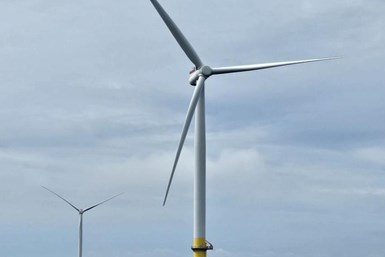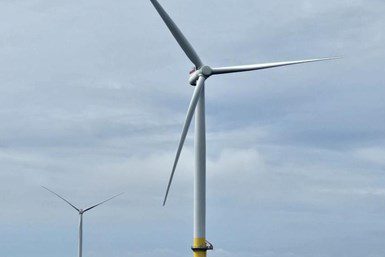
Source | BOEM
The current U.S. administration has made new strides in U.S. offshore wind energy, with the recent approval of the Maryland Offshore Wind Project, reported to be the U.S.’ 10th approved commercial-scale offshore wind energy project, and the Bureau of Ocean Energy Management’s (BOEM) finalized review of proposed offshore wind activities in the Gulf of Maine.
With the sanction for the Maryland project, the U.S. Department of the Interior (DOI) has approved more than 15 gigawatts of clean energy from offshore wind energy projects. Projects approved to date will reportedly power 5.25 million homes.
The Maryland Offshore Wind Project, as approved, could generate more than 2 gigawatts of clean, renewable energy for the Delmarva Peninsula and power over 718,000 homes. Additionally, the development and construction phases of the project could support almost 2,680 jobs annually over 7 years. The lease area is approximately 8.7 nautical miles offshore Maryland and approximately 9 nautical miles from Sussex County, Delaware, at its closest points to shore.
The Maryland Offshore Wind Project consists of three planned phases, which include the proposed installation of up to 114 wind turbine generators, up to four offshore substation platforms, one meteorological tower and up to four offshore export cable corridors. Two phases, known as MarWin and Momentum Wind, already have offshore renewable energy certificates from the state of Maryland.
On July 29, 2024, the BOEM announced the final Environmental Impact Statement (EIS) for the proposed project, which analyzed the potential environmental impacts of the activities outlined in the project’s construction and operations plan and considered reasonable alternatives. BOEM hosted two in-person and two virtual public meetings in October 2023 to gather feedback on the Maryland Offshore Wind draft EIS from Tribal Nations, local community members, commercial fishing interests and other ocean users.
BOEM has also announced the availability of its final Environmental Assessment (EA) of the wind energy area (WEA) located in the Gulf of Maine.
The final EA evaluated the potential issuance of commercial wind energy leases off the coasts of Maine, New Hampshire and Massachusetts. It considered the potential environmental impacts associated with activities such as conducting surveys and installing meteorological buoys, but not the installation of offshore turbines, which would be assessed in a separate environmental review if a leaseholder submits a project proposal. BOEM found that leasing and site assessment and characterization activities will not have a significant impact on the environment.
“BOEM is actively assessing proposed offshore wind activities in the Gulf of Maine by collaborating with Tribes, state and federal agencies, ocean users, local communities and other stakeholders,” says BOEM director Elizabeth Klein. “We are committed to ensuring that future offshore wind development proceeds in a manner that reduces potential impacts on other ocean activities and the surrounding ecosystem.”
Source link : http://www.bing.com/news/apiclick.aspx?ref=FexRss&aid=&tid=66e96bd169264ce6bfda7e0451c77082&url=https%3A%2F%2Fwww.compositesworld.com%2Fnews%2Fus-approves-maryland-offshore-wind-finalizes-ea-for-maine-project&c=2451208041600115952&mkt=en-us
Author :
Publish date : 2024-09-17 00:34:00
Copyright for syndicated content belongs to the linked Source.




